- Register
- Log in to Tune-In
- Wishlist (0)
-
Shopping cart
(0)
You have no items in your shopping cart.
Conditions of use
Use don't abuse please:

The following ranking is not arguing that The Beatles are one of the scariest bands or anything, and more just that they were stylistically all over the place, and adventurous when it came to genres, so sometimes, their willingness to experiment and get weird led to them also getting scary. The following tracks are among the Fab Four’s creepiest, with the last one mentioned here being a genuine endurance test, and honestly nightmarish non-stop for more than eight minutes.
10 "Within You Without You" (1967)
The scariest song from Sgt. Pepper's Lonely Hearts Club Band will be mentioned in a bit, and maybe this spot should’ve gone to something like "Being for the Benefit of Mr. Kite!," which is lyrically more unsettling, but oh well. Here’s “Within You Without You.” Even for a track on a psychedelic album like Sgt. Pepper's Lonely Hearts Club Band, this is musically quite adventurous, and the philosophical lyrics here are mysterious and a bit unsettling.
9 "Maxwell's Silver Hammer" (1969)
If you ignore the lyrics, then “Maxwell’s Silver Hammer” is among the bounciest of all the Beatles songs, in step (for better or worse) with Paul McCartney’s sensibil details

Ringo Starr is cooperating with director Sam Mendes and his team on the upcoming four-part Beatles biopic, but a source exclusively tells Examiner that he’s being extremely uptight and micro-managerial about certain aspects of his life – especially regarding how much he partied back in the day.
“Some early concepts around what exactly the Ringo Starr-focused movie would cover leaned into Ringo’s hard partying during the height of the Beatles success,” the source says. “He loved being famous more than the other three guys – that’s a matter of historical record. Even with the casting of Barry Keoghan, you see a perfect fit with that kind of ‘wild man’ rock star portrayal.”
However, the source adds that with Starr’s “considerable input,” the ideas have evolved and filmmakers are trying to “unearth stories and moments from his years in the band that fans haven’t heard a million times before.”
“It’s all getting special attention from Sam and his team because they want all four films to be great and to be essential viewing for global audiences,” the source continues, “and Ringo has been details
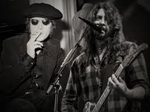
Bluesy hits and simple melodies characterized the Beatles’ early career. The end of their tenure was characterized by oddball, psychedelic, heavily conceptual tracks. Operating in a sort of middle ground is the Beatles‘ self-titled record, a.k.a The White Album. Released in 1968, this record saw the group turn their backs on heady material in favor of uninhibited rockers. Many fans consider this album their best work, including Dave Grohl. These opinions are echoed by John Lennon, who also thought this record was a timeless effort. Find out why both Grohl and Lennon loved The White Album below.
For a few of the albums that came before The White Album, the Beatles relied on heavy concepts. From loose themes to concept records, these albums saw the group leave their blues-inspired early years behind. As they worked on their self-titled, Lennon counted it as a return to form.
The late-great Beatle felt the album was hyper-focused on the band as meritable rock musicians. They didn’t need any overarching concept; their talent could stand on its own.
“What we’re trying to do is rock ‘n roll, ‘with less of your philosorock,’ is what we’re saying to ourselves details

The recordings are said to be from 1963, not long after The Beatles’ Jan. 1, 1962, audition for Decca Records.
Hang on to your Beatle wigs! Two “new” early Beatles recordings have surfaced, a solo acoustic demo of Paul McCartney’s self-penned “Love of the Loved,” and the first recording of Lennon-McCartney’s “Misery.”
Both turned up on YouTube on Dec. 10, 2025, apparently having been taken from one of the latest in a seemingly endless series of Beatles bootleg albums. Scroll down to the bottom of this article to hear the two newly discovered tracks.
“Love of the Loved” previously existed only on the legendarily shaky Beatles audition for Decca Records, which they famously failed, from Jan. 1, 1962. The newly surfaced demo was auctioned in 1991 by Christie’s, but has never appeared until now.
The version of “Misery,” purportedly from a Jan. 30-31, 1963, rehearsal at an empty Cavern Club (the Beatles’ early concert stronghold), was long reported to exist. A snippet of it was played by Beatles author Mark Lewisohn during his lecture tours, but this is the first appearance of the full song.
It’s ye details

Many Beatles fans through the years have made a hobby out of picking apart the Fab Four’s lyrics to find some hidden message or meanings. That was commonplace when the band was still together. In fact, John Lennon even wrote “I Am The Walrus” to mess with listeners who were assigning way too much meaning to their songs. Still, The Beatles recorded many songs with hidden meanings that flew over the heads of many listeners back in the day. Let’s look at a few Beatles tunes with fascinating, deeper meanings that you might have missed.
“Got To Get You Into My Life”
Fans go back and forth on how drug-influenced or drug-referential certain songs from The Beatles are. “Got To Get You Into My Life” is one song that has been confirmed by Paul McCartney to be about p*t.
“[We] were on tour, so we were all together in the hotel suite,” said McCartney of the inspiration for the song. “We were having a drink, and then Bob [Dylan] arrived and disappeared into a backroom. Then Ringo went back to see him and after a couple of minutes Ringo came back into the suite looking a little dazed and confused. And we said, ‘What’s up?’ and he said, details
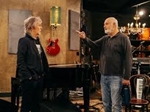
Paul McCartney mourned Rob Reiner and wife Michele’s deaths in an emotional Instagram post. McCartney praised Reiner’s work and recalled fond memories from filming 'Spinal Tap II.' 'Spinal Tap II' scene with McCartney was inspired by a real-life musical encounter.
Like many, Paul McCartney was shocked and saddened by the tragic news of the death of Rob Reiner and his wife, Michele.
McCartney shared his grief in an Instagram post on Dec. 15 with a photo of him and the famed director on the set of Spinal Tap II: The End Continues, which featured a cameo by the former Beatle.
“What a tragedy the death of Rob Reiner and his wife, Michele, is. It is so shocking in many ways but for me especially so, because over the last year I had been working with him. He directed me in ‘Spinal Tap II: The End Continues’. He was such an upbeat, lovable man,” McCartney wrote.
“Life can be so unfair and this tragedy proves it. His father, Carl Reiner, was a great humourist before him and Rob followed in his dad’s footsteps doing a terrific job making many great films. I will always have fond memories of Rob and the idea that he and his wife will no longer be in the details

Two legendary albums recorded in the same year using the same musicians, but released by completely different artists... Such an abundance of musical riches could have happened only in the early 1970s, before rock became corporate and was still in a state of communal bliss.
We are talking, of course, about George Harrison’s All Things Must Pass and Derek and the Dominos’ Layla & Other Assorted Love Songs. The two albums were created simultaneously, with the latter’s recording sessions taking place while Harrison was in the final stages of completing his first post-Beatles’ solo work.
It’s well known that Derek and the Dominos grew out of Harrison's backing band for All Things Must Pass. The Dominos — Eric Clapton, Bobby Whitlock, Carl Radle and Jim Gordon — were among the many musicians who played on Harrison’s triple-LP magnum opus. Having just completed work on Clapton’s self-titled solo album that March, they joined the former Beatle in May to begin work on what turned out to be a three-album set, comprising two albums of new songs and a bonus disc of studio jams, dubbed Apple Jam.
On August 23, as work continued on Harrison’s album, Clap details

There are so many films out there that are about or inspired by The Beatles. Not all of them are top-notch productions, but the following three are definitely worth a watch, in my opinion. Let’s take a look! If you’re a diehard Fab Four fan, you’ve probably seen at least a couple of these films.
‘Across The Universe’ (2007)
While some may not love it, I think Across The Universe is one of the finest films to utilize The Beatles’ music. They could have turned this into a cheesy reimagining of The Beatles’ lives as bandmates. But, instead, they looked into the lives of completely different people during the same era The Beatles were around, without including anything about The Beatles other than their music. It’s quite creative, undeniably psychedelic, and a poignant look at the real-life era of war and cultural tide-changing that occurred with the Fab Four as the musical backdrop.
‘Nowhere Boy’ (2009)
I rarely ever hear about this film nowadays, and that’s absolutely insane to me. Nowhere Boy is definitely one of the best films about The Beatles, specifically the early years of one of the band’s most iconic members, John Lennon. Eve details

At 92, Yoko Ono is finally finding an unlikely wave of support from Beatles fans who once blamed her for splitting up the band, with many now pointing to her lifelong pain over her abducted daughter as the reason they finally understand – and forgive – her.
OK! can reveal the renewed empathy follows the release of the HBO Max documentary One to One: John & Yoko, which revisits the 1971 abduction of Ono's daughter, Kyoko, now 61, by her former husband Anthony Cox and the decades-long search that consumed Ono and John Lennon over the "lost" girl.
The film, anchored around Lennon's 1972 benefit concert at Madison Square Garden, also reveals the emotional toll Kyoko's absence took on Ono's art, her public persona and – according to newly vocal Beatles fans – her treatment in pop history.
Much of the surge in sympathy stems from viewers who say the documentary reframes Ono's grief.
One longtime Beatles enthusiast said: "I think people underestimated just how much weight Yoko she was carrying. You can now see the pain of a mother who lost her child, and suddenly the jokes about her breaking up the band feel cruel. The revelations about Yoko's pain as a mom has changed the wa details

For as much as karma can work in mysterious ways, it can also be glaringly obvious, which seemed to be the case for Paul McCartney when he had to field “awful” jokes about his wife, Linda McCartney, joining Wings. The band was McCartney’s first ensemble endeavor post-Beatles, the latter of which was famously overshadowed by a passive-aggressive feud between Yoko Ono and every member of the Fab Four besides John Lennon.
The theory that McCartney was looking directly at Ono while he sang “Get Back” in the studio (specifically, “Get back to where you once belonged”) was a manifestation of this divide. Years later, McCartney discussed this contentious time in Beatles history during an appearance on The Howard Stern Show. “Those were very paranoid times, you know,” the ex-Beatle said.
“And let’s face it, we didn’t welcome Yoko in the studio. I thought it was a guy thing. Even the guys’ wives and the girlfriends and stuff weren’t really welcome in the studio. Control room for a quick visit. But actually sit in the studio with us? It was like, ‘Uh, no. Excuse me? We’re working.’”
Not long after the infamo details

Many Beatles fans through the years have made a hobby out of picking apart the Fab Four’s lyrics to find some hidden message or meanings. That was commonplace when the band was still together. In fact, John Lennon even wrote “I Am The Walrus” to mess with listeners who were assigning way too much meaning to their songs. Still, The Beatles recorded many songs with hidden meanings that flew over the heads of many listeners back in the day. Let’s look at a few Beatles tunes with fascinating, deeper meanings that you might have missed.
“Got To Get You Into My Life”
Fans go back and forth on how drug-influenced or drug-referential certain songs from The Beatles are. “Got To Get You Into My Life” is one song that has been confirmed by Paul McCartney to be about p*t.
“[We] were on tour, so we were all together in the hotel suite,” said McCartney of the inspiration for the song. “We were having a drink, and then Bob [Dylan] arrived and disappeared into a backroom. Then Ringo went back to see him and after a couple of minutes Ringo came back into the suite looking a little dazed and confused. And we said, ‘What’s up?’ and he said, details

Ringo Starr’s most notable endeavor post-Beatles is his creation and career with his band, Ringo Starr & His All-Star Band. Founded in 1989 and still going strong to this day, Ringo Starr & His All-Star Band always includes Ringo, of course, as well as some of the finest rock ‘n’ roll musicians of all time. Minus the core members, Gregg Bissonette, Steve Lukather, and Colin Hay, a few of the musicians who have been a part of the group include Joe Walsh, Billy Preston, Levon Helm, Jeff Lynne, Todd Rundgren, and many more. One musician who had an invitation to join the band but never did was Starr’s old pal and bandmate, George Harrison.
Following the breakup of The Beatles, George Harrison went on to have an incredibly successful solo career. Arguably, the best solo career of a Beatle. Prior to his passing, George Harrison scored three No. 1 hits, two No. 1 albums, and several Top 10 songs and albums. Needless to say, Harrison was a hot commodity, and that is seemingly why he never joined Ringo Starr & His All-Star Band.
George Harrison Jokingly Stated That He Was Too Expensive
Per the list we just gave you, Ringo Starr didn’t toss invitations out willy-nilly. He cho details
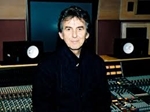
Before George Harrison's death at 58, the Beatles’ lead guitarist delivered one final hit that carried deep personal meaning. In 2001, Harrison recorded the only song he's ever developed with his son, Dhani Harrison.
In his music career, Harrison had previously written a song in honor of his song after his birth in 1978. The song "Unknown Delight" was released on his 1982 album Gone Troppo. It took almost 20 years before Harrison could record a song with his son, and it unknowingly became his last.
The song "Horse to the Water" was recorded by Harrison on guitar and on lead vocals, while his son also played guitar. Instead of the song being released as their own, it became part of the 2001 album Small World, Big Band. It was performed by Jools Holland’s Rhythm and Blues Orchestra and Friends.
According to American Songwriter, Harrison and his son's parts were sent out to Holland in London, where his band finished the rest. All the while, Harrison sang the track while battling throat cancer.
"Horse in the Water" was recorded in early October 2001, with Harrison having died almost two months later on November 29, 2001. The song was later released shortly after his death in December.
details
Liverpool's most notable quartet has no shortage of famous admirers. The English music industry would be unrecognizable without The Beatles, the band that helped lay the foundations for modern music. Whether it's the penmanship of John Lennon and Paul McCartney, paired with the musical sensibilities of George Harrison and Ringo Starr, the group pushed the limits of pop-rock, psychedelia, and even Indian music across their seven key albums. Although generations of musicians would embrace the band's spirit of innovation, a certain early fan took one of their songs for a spin. In fact, this song by The Beatles achieved even greater fame thanks to the reinterpretation of this fellow English singer. The Beatles Wrote It but Joe Cocker Turned It into a Bluesy Masterpiece
One notable fan of Sgt. Pepper's is none other than rocker Joe Cocker — specifically the track "With a Little Help from My Friends." A year after Sgt. Pepper's release, Cocker recorded the song for his debut album of the same name. The cover is unlike anything performed by The Beatles, which originally features drummer Starr on the vocals and was written as a light, peppy pop-rock tune with a simple 4/4 time signature. Cocker went the opposit details

In 1980, Frank Veteran was a resident in surgery at Roosevelt Hospital on New York City’s west side. At 30 years old, he was in his fifth and final year of surgical training Between the pressures of medical school and his job, he’d had little time to keep up with current events, let alone the comings and goings of his childhood heroes.
“I was into the Beatles, and I followed them,” Veteran told me when we spoke in 2005 for a Guitar World Presents special issue. “But by the time I was the chief resident in surgery, I wasn’t listening to them anymore. I was too busy. I didn’t even realize John Lennon was living in New York.”
One of three chief residents at Roosevelt, Veteran was on call for emergencies every third night. There, he attended to the routine injuries of city life.
“Gunshot wounds, stab wounds. You wouldn’t have to be in the hospital all the time, but if anything happened, you’d have to come in and take one of the younger residents through the procedure,” he explained. “When you were chief resident, you were the primary head doctor. You ran the whole show.”
On the night of December 8, 1980, the show was details
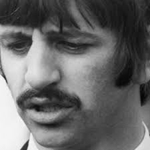
In the experimental, psychedelic operetta that was The Beatles’ 1967 album, Sgt. Pepper’s Lonely Hearts Club Band, drummer Ringo Starr got to don the role of Billy Shears, singer of the affable, tongue-in-cheek second track, “With a Little Help from My Friends”. (Shears was a subtle reference to the man who allegedly replaced Paul McCartney in the infamous “Paul is dead” conspiracy.)
McCartney, along with John Lennon, wrote the song specifically for Starr. The track was a little dopey, which was both a friendly tease of their bandmate and, from a performance standpoint, a character that Starr could portray well. “We always liked to [write a song] for him. It had to be not too much like our style,” McCartney explained to Barry Miles in Many Years From Now. “I think that was probably the best of the songs we wrote for Ringo, actually.”
Starr had no qualms taking up the mantle for novelty songs like “With a Little Help from My Friends”, “Yellow Submarine” the previous year, or “Octopus’s Garden” two years later. But there was one lyric from the Sgt. Pepper’s Lonely Hearts Club Band track that he refused to si details
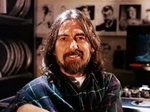
George Harrison fought a long and hard battle against cancer, but his full autopsy report is still a mystery 24 years later.
Harrison battled several different forms of cancer and sought treatment all over the world before he died at the age of 58 on November 29, 2001. Those who were present during his death said he left his body in the spiritual way he'd been practicing for decades. After the tragic event, which left Paul McCartney and Ringo Starr the last surviving Beatles, his loved ones gave him a send-off he would've loved.
However, more than two decades later, some mysteries still surround Harrison's death. His autopsy report was never released, and there were issues with the place of death that was initially added to his death certificate.
In 1997, after Harrison discovered a lump in his throat, doctors diagnosed him with throat cancer. They successfully removed the lump and Harrison underwent two radiation treatments at the Royal Marsden Hospital in London, one of the U.K.'s leading cancer centers, per Rolling Stone.
Harrison played down his illness by saying, "I am very lucky. I'm not going to die on you folks just yet." However, not long after becoming cancer-free, Harrison almost died details

Sir Paul McCartney is locked in a battle with the European Union over its plans to ban the use of the words 'sausage' or 'burger' to describe plant-based products.
The Beatles legend's late wife Linda, who died of breast cancer in 1998, was a vocal vegetarian and launched her own best-selling chain of meat-free alternatives in 1991. However, her business's right to continue describing its products as vegetarian burgers and sausages is now under threat.
The EU could make a decision as early as Wednesday over whether the use of the two words will be outlawed if a food is plant-based.
Mr McCartney, 83, and other members of Linda's family have joined the campaign protesting against the move. He told The Sunday Times: 'To stipulate that burgers and sausages are "plant-based", "vegetarian" or "vegan" should be enough for sensible people to understand what they are eating.
'This also encourages attitudes essential to our health and that of the planet.' A group of cross-party MPs, including Jeremy Corbyn, have also called for the proposed ban to be scrapped in a letter written to the European commissioners.
Linda McCartney launches her range of vegetarian food in 1991. P details

The Beatles drummer opened up about the devastating phone call he received in December 1980 while in Barbados and how he reacted to the news of John Lennon having been shot
It's been 45 years since a fan fatally shot John Lennon outside his New York home, and fans are just now looking back on the moment Ringo Starr opened up about finding out about the shooting for the first time.
John Lennon was shot on December 8, 1980, in the entrance of his Manhattan residence, with the Beatles legend declared dead upon arrival at hospital after being rushed there in a police vehicle. The musician was leaving his home alongside wife Yoko Ono when gunman Mark David Chapman seized his chance to attack the star, later citing Lennon's controversial remark about the Beatles being 'more popular than Jesus' as his primary motive. Chapman received a life sentence and continues to serve his time behind bars to this day.
The assassination sent shockwaves across the globe, particularly affecting his former Beatles bandmates, who have subsequently spoken openly about losing their dear friend.
During a 1981 interview with Barbara Walters, Ringo Starr recalled the devastating moment he learnt of John's sh details

No catalog has ever been as exhaustively analyzed as The Beatles’ output of albums. And yet, even within the relatively small batch of albums that they released, some LPs have failed to receive the attention they deserve.
These three Beatles albums will rarely be named among the group’s finest efforts. We explore the reasons why below. And we also explain why you should check them out if you’ve been holding back till now.
‘With The Beatles’ (1963)
The Beatles’ UK debut Please Please Me features a fantastic track listing. It also owns the great story about it being recorded, for the most part, in a single night. By contrast, With The Beatles couldn’t possibly have garnered that same kind of attention. But don’t think for a moment that the group was enduring some kind of sophomore slump with this release in 1963. If anything, it displayed just how quickly they were progressing as writers and musicians. Songs like “It Won’t Be Long” and “All My Loving” pushed all the pleasure buttons like the early hit singles. The group also once again flexed their muscles on cover material, as on their searing take on the Motown staple “Money details
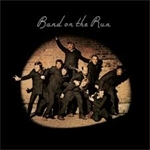
On This Day, Dec. 5, 1974…
Paul McCartney and Wings released their third album, Band on the Run, which became a huge hit and remains McCartney’s most successful non-Beatles album.
The album produced two hits, the title track and “Jet,” and went to #1 in the U.S. and the U.K.
The cover featured McCartney, his wife Linda and guitarist Denny Laine posing as escaped convicts alongside actors James Coburn and Christopher Lee, British boxer John Conteh, U.K. broadcasters Michael Parkinson and Clement Freud, and English entertainer Kenny Lynch.
To celebrate the anniversary, McCartney released a special 50th anniversary edition of the album in February 2024.
McCartney’s post-Beatles career with Wings is also the subject of a new documentary, Man on the Run, premiering globally on Prime Video on Feb. 25, 2026.
Source: Everett Post
details
The childhood home of George Harrison of The Beatles is now open to visitors for the first time ever through scheduled guided tours.
Located at 25 Upton Green in Speke, the family home of George Harrison played a formative role in the ‘quiet’ Beatle’s early life and musical development, serving not only as his family residence from 1950 to 1962 but also as an early rehearsal space for The Beatles in the years before Beatlemania.
The experience has been developed and will be delivered by Dale Roberts, tour guide and co-owner of the property, who has spent over a decade sharing Beatles history with visitors from around the world. He became co-owner of the Harrison family home a year ago, after Ken Lambert asked him to come on board as an owner. Ken won the house at auction in 2022 in a well-publicised purchase of the property, Ken would turn into an Air BnB for guests to stay in.
“George’s story is a Liverpool story”
“This house is a reference point to a local Liverpool musician who would just so happen to be part of a phenomenon that changed the world. There has been huge interest globally in where The Beatles came from, and 25 Upton Green has always felt details

The Beatles are back on the Billboard charts thanks to Anthology 4, the new addition to the band’s Anthology series, which was recently reissued.
Anthology 4 features 36 tracks, including 13 previously unreleased demos, session recordings and more. It debuted in the top 10 on five Billboard charts, including both the Top Albums Sales and Top Current Album Sales charts, where it landed at #9.
The album is also at #7 on the Top Rock & Alternative Albums chart, #6 on the Top Rock Albums chart and #3 on the Indie Store Album Sales chart.
Anthology 4 was released as a standalone and was also part of the larger The Anthology Collection box set, with both debuting at #48 on the all-genre Billboard 200 chart. The Collection includes the first three Anthology releases, which originally came out in the '90s, and hit #1 on the Billboard 200 and the Top Album Sales chart.
The release of The Anthology Collection coincided with the Disney+ debut of the newly restored and remastered version of the Anthology documentary series, which aired on ABC in 1995. The new version was expanded from eight to nine episodes. A 25th anniversary edition of The Beatles Anthology book was also released in October.
details
The Beatles are famous for struggling to agree, but when it came to this one song Paul McCartney wrote for the Fab Four, three of them agreed unanimously about how much they hated the song. Nearly 60 years ago, the group released one of their most iconic albums, Abbey Road, and McCartney wrote one of their most forgotten hits, “Maxwell’s Silver Hammer”. However, the song and the sessions frustrated the group, and it is considered their worst song. Why Were the Beatles Members Frustrated With Paul McCartney and "Maxwell’s Silver Hammer"?
“Maxwell’s Silver Hammer” almost did not make it onto the album, as John Lennon, George Harrison, and Ringo Starr disliked the song due to the song’s complexity. McCartney first wrote the song in 1968 after the group’s trip to India, and it was intended for Let It Be. Even after the song was rejected, “Maxwell’s Silver Hammer” would soon find its way onto the Abbey Road album, but it almost destroyed the band.
As the songwriter, McCartney wanted the song to sound a certain way, but none of his bandmates were able to match his creative vision. This caused tension in the studio, as McCartney’s details
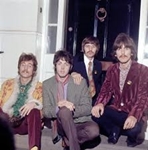
Two Beatles songs — "Real Love" and "I'll Get You" — return to multiple charts as the band's Anthology 4 and the Anthology Collection both debut inside the top 10. LONDON - MAY 19: English singer, songwriter and guitarist John Lennon (1940-1980), English singer, songwriter and bassist Paul McCartney, English musician, singer and drummer Ringo Starr and English musician, singer, songwriter and guitarist George Harrison (1943-2001) of the Beatles attend a press party at the home of manager Brian Epstein supporting the release of Sgt. Pepper's Lonely Hearts Club Band, May 19, 1967, in London, United Kingdom. (Photo by Jeff Hochberg/Getty Images)
The Beatles never have a completely quiet week on the charts, as people all around the world stream and buy the band’s music constantly. The group typically performs best in the United Kingdom, where all four musicians — John Lennon, Paul McCartney, George Harrison, and Ringo Starr — are originally from and where the outfit got its start.
As The Beatles score two new charting albums with both Anthology 4 and the larger, more all-encompassing The Anthology Collection, multiple tunes from the rockers find their way back to several different details
